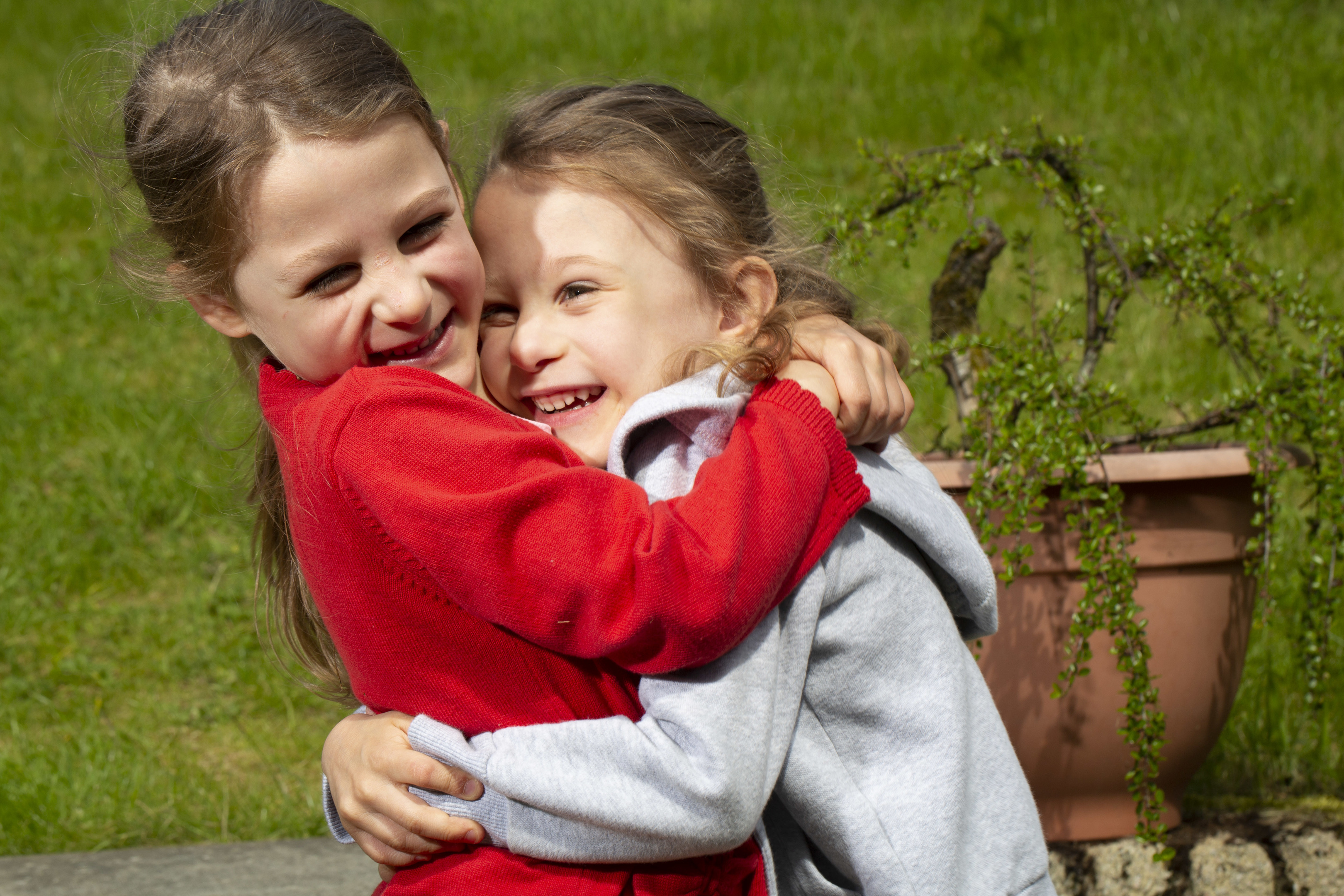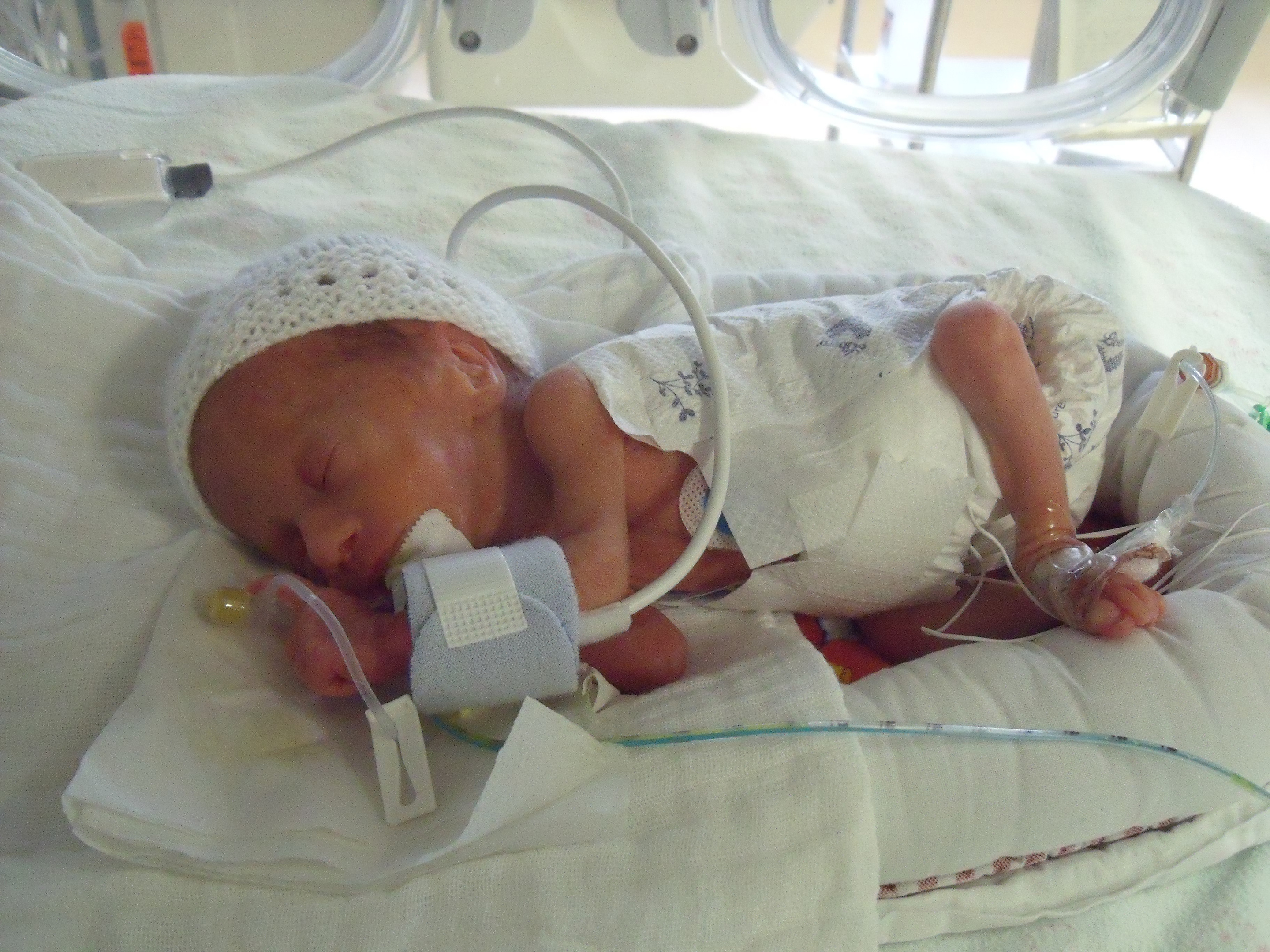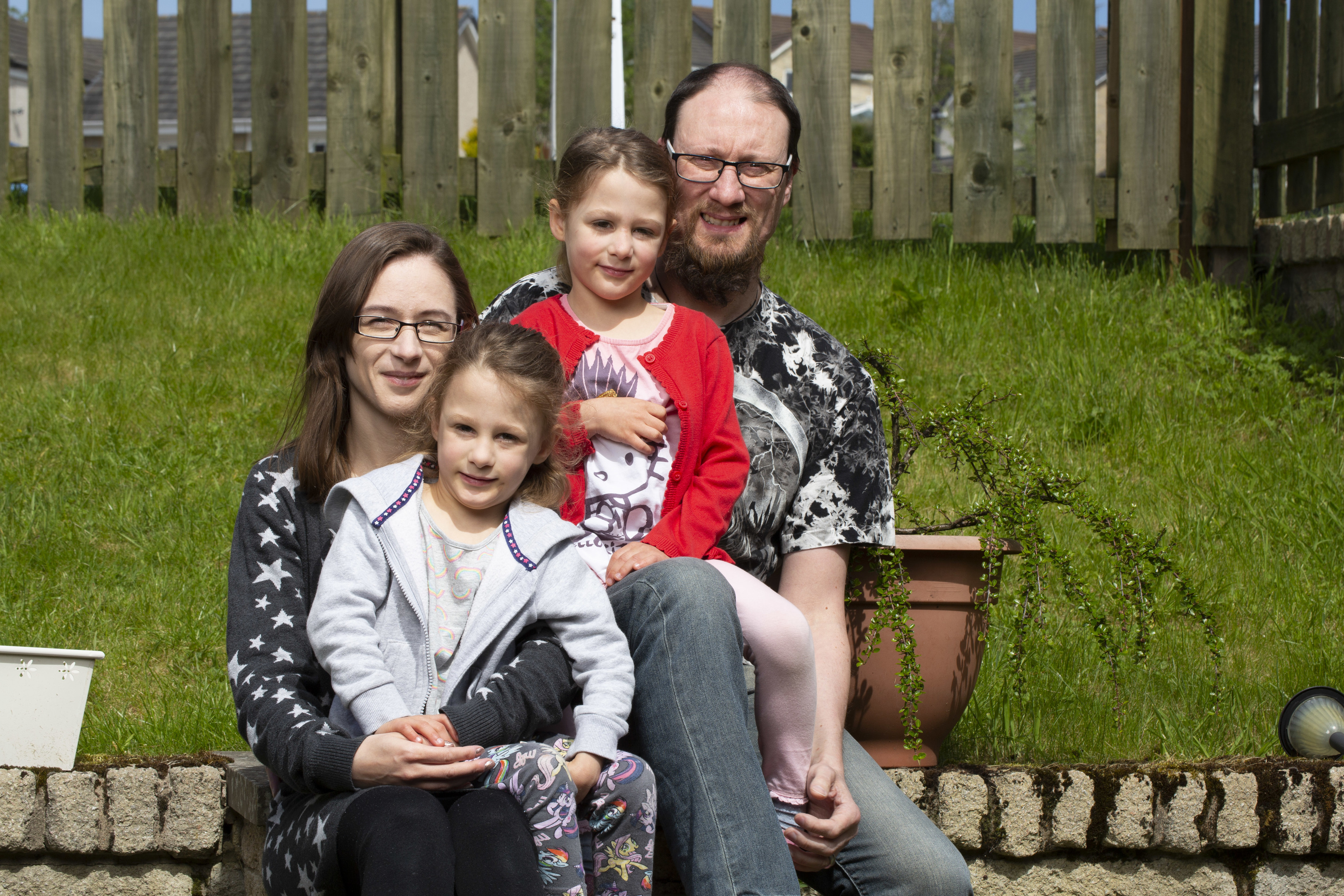
SHE is the little warrior twin doctors believed could not survive birth.
Worse, they feared that allowing her to stay in the womb would kill her sister.
Their mum and dad Amy and Richard Taylor, from Aberdeenshire, were faced with a decision no parents should have to make: take the decision to lose one baby to save the other or risk losing them both.
They decided to give them an equal chance. And their courageous gamble paid off.
Their cherished girls not only survived the birth, but are fit and healthy and have just marked their fifth birthday.
The youngsters, Gaia and Luna – meaning Earth and moon – celebrated their joint birthday at their grandparents’ home near Fraserburgh with presents galore.
Mum Amy, 31, who married 46-year-old retail manager Richard in a Braveheart-style Celtic ceremony eight years ago, said: “It was a very special birthday. When you look at them now it’s hard to believe the start they had in life.
“When they were born, nine weeks early by caesarean section, Gaia came first.
“She was tiny, only 1lb 2 oz but she gave this big cry, like a battle cry as if to say ‘I’m here!’ so we gave her the middle name Aoife which means Little Warrior. It seemed fitting. Luna came quietly two minutes later and was 3lb 4oz. We were so relieved they were alive. They are our little bravehearts.”
The couple agreed to relive the tortuous 31-week pregnancy to bring hope to other parents going through a similar ordeal.
Amy, from Oldmeldrum, said: “We had no idea we were having twins until we went for what we thought was our 12-week scan at Aberdeen Maternity Hospital.
“The nurse doing it said she thought I wasn’t 12 weeks pregnant. So Richard asked how I could be so big and she said ‘we’ll take a look and see’.
“Then she said ‘here’s the baby’s little heartbeat, and here’s the other baby’s heartbeat’, It was a big surprise.
“But as we were going through the pregnancy, the hospital noticed that the babies were not growing as much as they should, especially Gaia.
“It was because her umbilical cord was at the end of the placenta and she was getting less of the goodness from it whereas Luna was attached in the middle and doing better.”
Richard added: “We were getting more frequent scans and the doctors were telling us it was unlikely we were going to have two babies.
“At around 19 weeks into the pregnancy they were getting really worried and suggested we go and talk to doctors in London about cord occlusion, a procedure to have the smaller one terminated.”
Amy explained: “They believed Gaia was really struggling and she wouldn’t make it. They thought there was the potential that if Gaia died inside the womb Luna would try to give her a blood transfusion to save her which would then kill Luna as well.
“This is because with twins there is always a chance of twin-to-twin transfusion syndrome. That means that if one is in trouble the other will try to save it.”
Twenty weeks into the pregnancy the couple attended London’s Queen Charlotte’s Hospital which has a specialist maternal medicine unit. Doctors there discussed with them a procedure known as laser cord occlusion.
Amy explained: “The mum is conscious when it is happening and the operation would involve a laser to remove Gaia’s umbilical cord from the placenta leaving her to die inside me. But there are risks including going into early labour and the other baby dying too.”
The couple had three scans over three weeks at the hospital but they showed neither signs of deterioration or improvement in either twin’s condition. It was after the final scan that Amy and Richard decided against the termination.
Amy said: “Gaia wasn’t still, though. Both the girls were always kicking and turning. To me it didn’t feel like they were struggling as much as the doctors thought they were.”
And she added quietly: “I knew I couldn’t just sit there awake while it was happening. I couldn’t just let one of my babies be taken from me.”
“In the end we decided to let nature take its course,” said Richard.
“We thought that if there were risks either way we might as well take the risk of having them both, rather than risk losing them both.
“We don’t stress about anything. Life is what it is. It will either happen or it won’t. We didn’t worry about it – and it worked.”
The couple returned to Aberdeen where the twins were closely monitored. They arrived 31 weeks and one day into the pregnancy by planned caesarean section.
Luna spent 11 weeks in the unit and Gaia 12, before returning home.
“They are as lively now as they were in the womb,” said Amy.
“They are on the go from the minute they get up until they go to bed.
“But even though they are identical twins – from one egg – they are their own people. They’re close, but independent too, and they are always giggling and fighting like siblings do.
“Obviously they were meant to be and they fought all the way to get here.”

Enjoy the convenience of having The Sunday Post delivered as a digital ePaper straight to your smartphone, tablet or computer.
Subscribe for only £5.49 a month and enjoy all the benefits of the printed paper as a digital replica.
Subscribe
